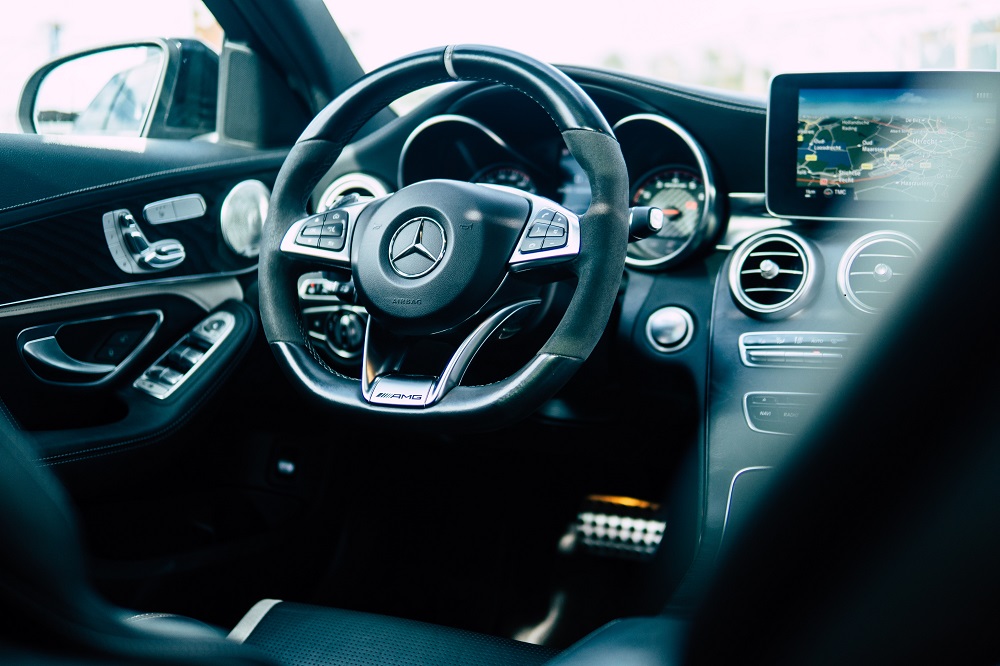Automotive industry trends in 2020 are primarily dictated by the demands of a new class of consumers – sophisticated customers with a high level of consciousness and awareness, ever-growing needs, and environment-focused preferences. It makes automotive services work at full blast and address arising challenges as quickly as possible not to lose clients.
EU Environment Regulations for Emission Reduction Dictates a New Challenge for Automotive Industry

One of the greatest challenges the automotive industry is facing this year is working according to the European Union Emission regulations. They were adopted in April 2019 by the European Parliament and the Council and strive to reduce CO2 emissions from vehicles so that car-building fleets aren’t allowed to exceed the collective average of 95 grams per kilometer. In fact, passenger cars and small trucks produce about 12%, resp. 2.5% of the total emissions of greenhouse gas (carbon dioxide) in the EU.
As a result of these regulations, the automotive industry should increase the number of electrified vehicles (battery electric, hybrid, fuel cell, and plug-in).
There are two Tesla gigafactories in the world, in the US and China. At the moment, after a ‘battle’ with environmentalists, Elon Mask’s plan to build a gigafactory in Germany has been crowned with success. They were forbidden to continue building because of the need for cutting 92 hectares of trees. But then Berlin-Brandenburg court stated that they could renew clearing the forest to continue their plant-building. They’re planning to engage 12,000 employees to produce 500,000 electric vehicles every year, starting from 150,000 cars in the middle of the next year.
“For sure. Giga Berlin will build sustainable energy vehicles using sustainable energy, so net environmental impact will be extremely positive!” – Elon Musk tweets.
Speaking of building and selling eclectic cars in China, where the number of sold cars exceeded 50,000 last year, today’s figures are quite dismal due to the coronavirus. According to some sources, the sales decreased by 92% this year, while in Europe increased significantly as compared to 2019.
What Shared Mobility Trends Are Still Relevant for the Automotive Industry This Year?
Shared mobility is not a 2020 trend, either. But using hybrid or electric vehicles by car sharing companies is. This tendency is supported by Volkswagen, for instance, who still recognize the vehicle-on-demand potential, improving the system with zero emission mobility.
Recently a Denmark car-sharing mobility company GreenMobility began operating in Antwerp, Belgium, with 350 e-vehicles after a successful business model implementation in Copenhagen. Now the provider is planning to expand its services to Sweden throughout this year.
Car-sharing fleets are still developing all over the world with some obvious leaders in the industry. For example, Yandex is sure to own the biggest vehicle-on-demand fleet having 21 thousand cars.
What Obstacles and Challenges Are There on the Way to Shared Mobility for the Automotive Industry in 2020?
First, the need to produce more electric cars because some companies which use this type of vehicles have established a trend, so everyone else should comply.
Second, software and hardware engineers should do their best to improve the technology of shared mobility and autonomous driving to make vehicle-on-demand services as comfortable and safe as possible. This refers to the artificial intelligence driven software that regulates the system of shared mobility by finding cars online, providing information about the trip, routes, and traffic jams.
If we speak about automated cars as part of the shared mobility system, artificial intelligence here is supposed to replace a driver’s mind and make decisions without the human factor, thus, being able to prevent roadblocks and collisions.
Autonomous Driving – Is It an Automotive Industry Trend or Challenge?

Self-driving vehicles can’t be called a 2020 automotive industry trend because many world-renowned companies such as Tesla, General Motors, Google’s Waymo, Honda, and others have been implementing this idea throughout a recent couple of years claiming that by 2020, at least 10 million autonomous vehicles will be at your service. But still, their efforts mainly failed and today it is considered to be a challenge because despite a number of produced autonomous cars their testing results show their imperfection and unreadiness to go on the roads. Experts supposed self-driving cars will free humanity from car accidents caused by human error but though they were mistaken. According to numerous testings, the results were unfortunate. For instance, in 2018 an Uber driverless vehicle ran down a person in the street due to some software impairments.
Besides, modern self-driven vehicles can’t be called fully autonomous. This is explained by the fact that regardless of numerous research and developments, artificial intelligence still remains insufficiently studied and developed.
Benefits and Disadvantages of Autonomous Driving for the Automotive Industry
Obviously many people will refuse from owning their own cars and for those with physical disabilities unable to get a driving license it will be a great opportunity to get a ride anytime they need.
It would be also good for the environment as the number of cars will probably be reduced and, as a result, much free space will appear as car-parking spaces in Los Angeles, for example, take even more than 17 million square meters.
Apart from promising to launch 1 million driverless cars, Elon Musk also claimed their owners could use them as an additional income source by having them as taxis when they don’t need them. According to Tesla’s inventor and co-founder, it will bring every owner $30,000 yearly. Though his plans are still either in his mind or in progress. Anyway, they’re not fulfilled yet.
Obstacles On the Way to the Era of Self-Driven Cars
At the moment to make driverless cars full road participants the automotive industry still has a lot of things to do. For instance, one of the great challenges is to create an appropriate infrastructure. Building smart highways equipped with autonomous traffic lights will help driverless vehicles avoid traffic jams and collisions with the help of special sensors that will communicate corresponding data to the autopilot. And yet there are many efforts to be dedicated to the development of AI that’s the core of the autonomous vehicles. Thus, a lot of research and testing should be conducted before humanity will be able to enjoy reading hot news or having a nap on the front seat of their car while driving to the office.
Infotainment: Is It a Necessity or Redundancy for Modern Automotive Industry?

Today people can be hardly impressed by the vehicle’s speed, its inner characteristics, or style. Everyone is looking for a universal mobility device that would go in line with modern technology. They want to simplify their lives as much as possible, and automobile engineers are doing their best to meet customers’ requirements.
In-vehicle infotainment (IVI) is a fast-growing field in the automotive industry with more than a $35 billion budget allocated for 2020. IVI is a combination of hardware and software enriching vehicles with the modern technology of entertainment. They serve as a reliable way for drivers to be informed about what’s important to them.
In-vehicle infotainment includes among others a personal assistant, connection with your devices providing an opportunity for shared mobility, personalized settings for your better comfort, and many more. For example, vehicle-to-everything is a great way to get full information about routes, pedestrians, and all related information that could be helpful for a driver or passengers. It’s a wireless technology that connects a car with the surrounding environment making it possible to avoid car crashes, choose the best route, and even reduce carbon dioxide emissions.
On the other hand, these technologies have brought another challenge to the industry: hacking threats. It, in turn, requires additional workforce, time, and budget to address it.
Are you ready to accept the upcoming challenges in the automotive industry?

